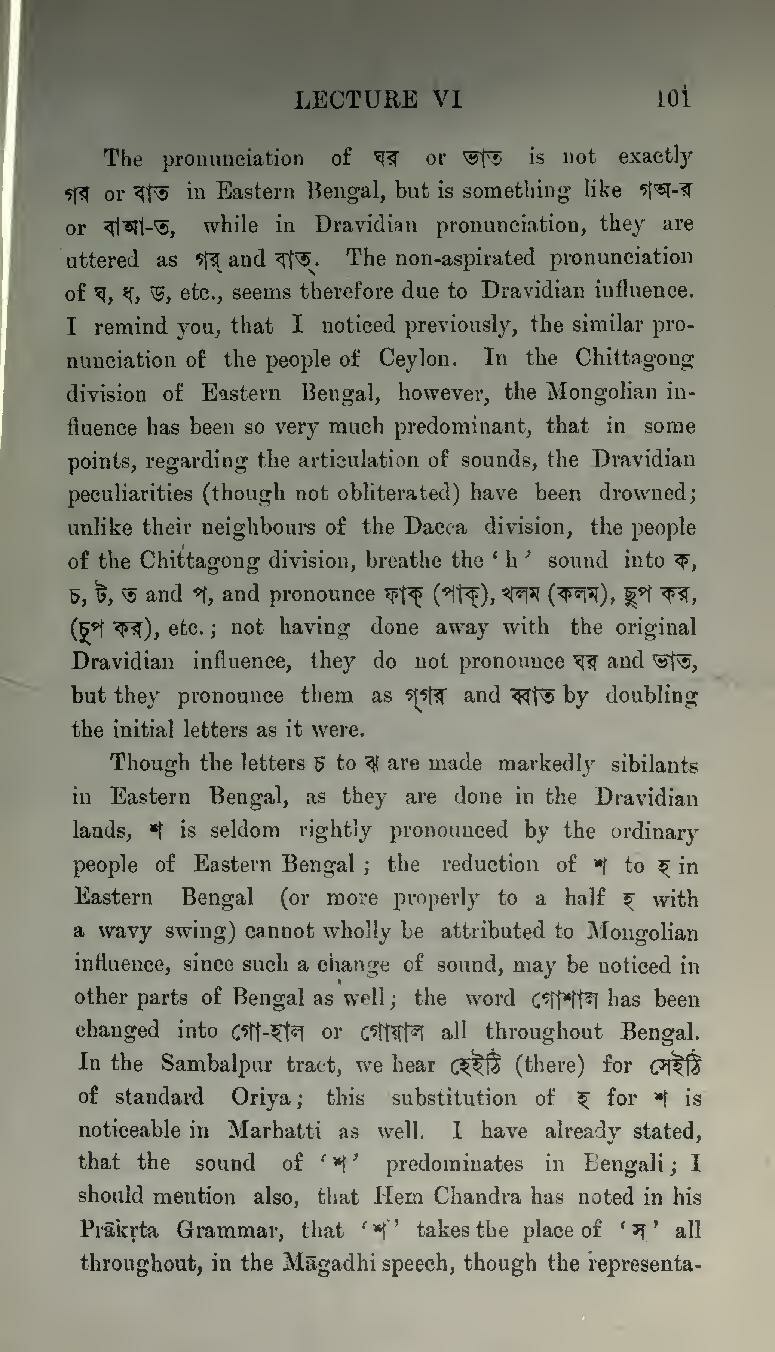The pronunciation of ঘর or ভাত is not exactly গর or বাত in Eastern Bengal, but is something like গঅ-র or বাআ-ত, while in Dravidian pronunciation, they are uttered as গর্ and বাত্. The non-aspirated pronunciation of ঘ, ধ, ড, etc., seems therefore due to Dravidian influence. I remind you, that I noticed previously, the similar pronunciation of the people of Ceylon. In the Chittagong division of Eastern Bengal, however, the Mongolian influence has been so very much predominant, that in some points, regarding the articulation of sounds, the Dravidian peculiarities (though not obliterated) have been drowned; unlike their neighbours of the Dacca division, the people of the Chittagong division, breathe the 'h' sound into ক, চ, ট, ত and প, and pronounce ফাক্ (পাক্), খলম (কলম), ছুপ কর, (চুপ কর), etc.; not having done away with the original Dravidian influence, they do not pronounce ঘর and ভাত, but they pronounce them as গ্গর and ব্বাত by doubling the initial letters as it were.
Though the letters চ to ঝ are made markedly sibilants in Eastern Bengal, as they are done in the Dravidian lands, শ is seldom rightly pronounced by the ordinary people of Eastern Bengal; the reduction of শ to হ in Eastern Bengal (or more properly to a half হ with a wavy swing) cannot wholly be attributed to Mongolian influence, since such a change of sound, may be noticed in other parts of Bengal as well; the word গোশাল has been changed into গো-হাল or গোয়াল all throughout Bengal. In the Sambalpur tract, we hear হেইঠি (there) for সেইঠি of standard Oriya; this substitution of হ for শ is noticeable in Marhatti as well. I have already stated, that the sound of 'শ' predominates in Bengali; I should mention also, that Hem Chandra has noted in his Prākṛta Grammar, that 'শ' takes the place of 'স' all throughout, in the Māgadhi speech, though the representa-
